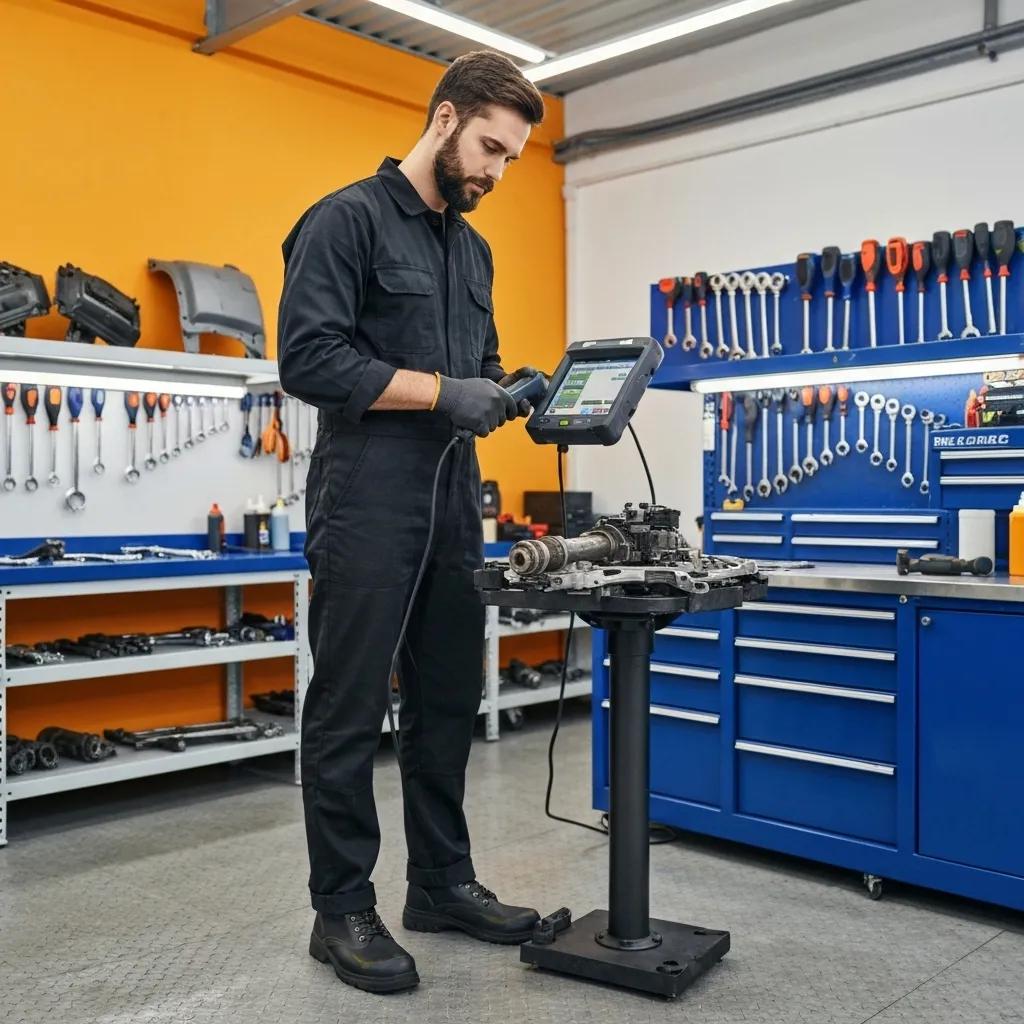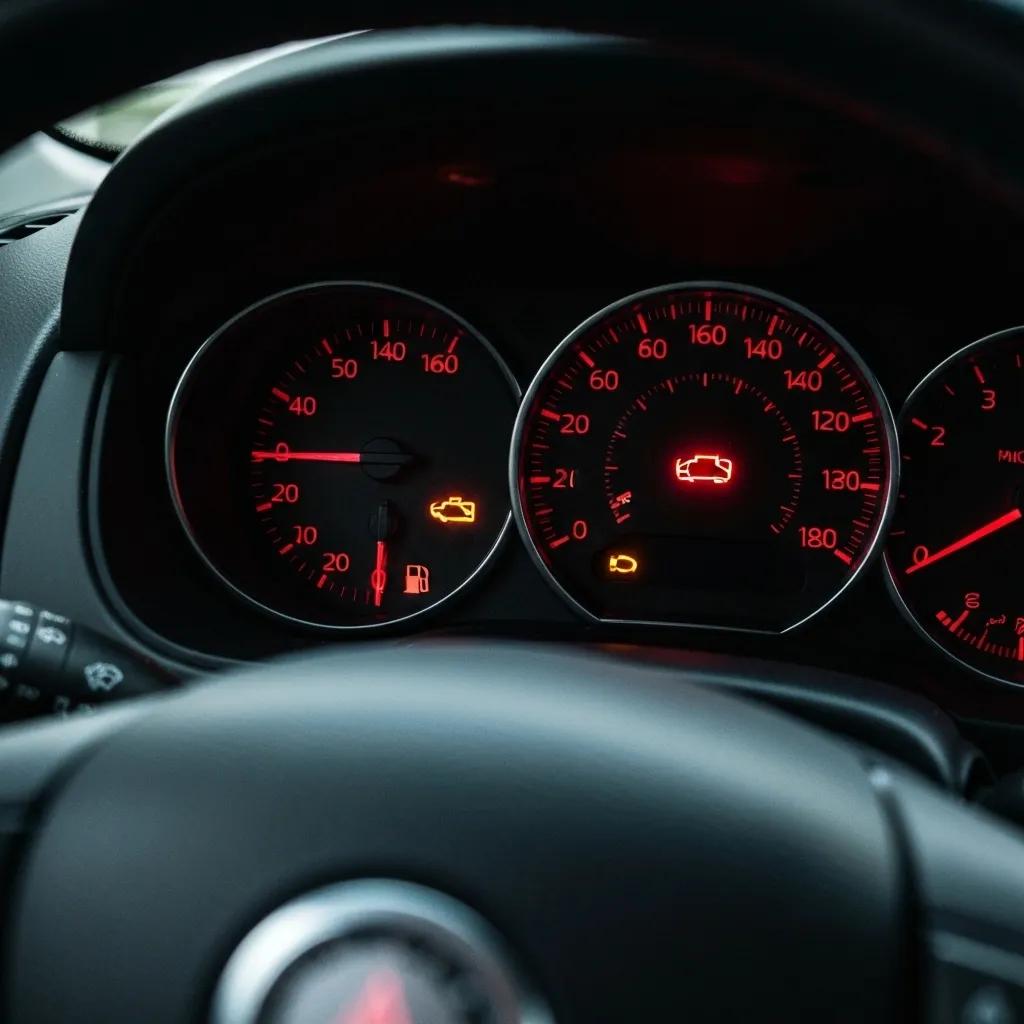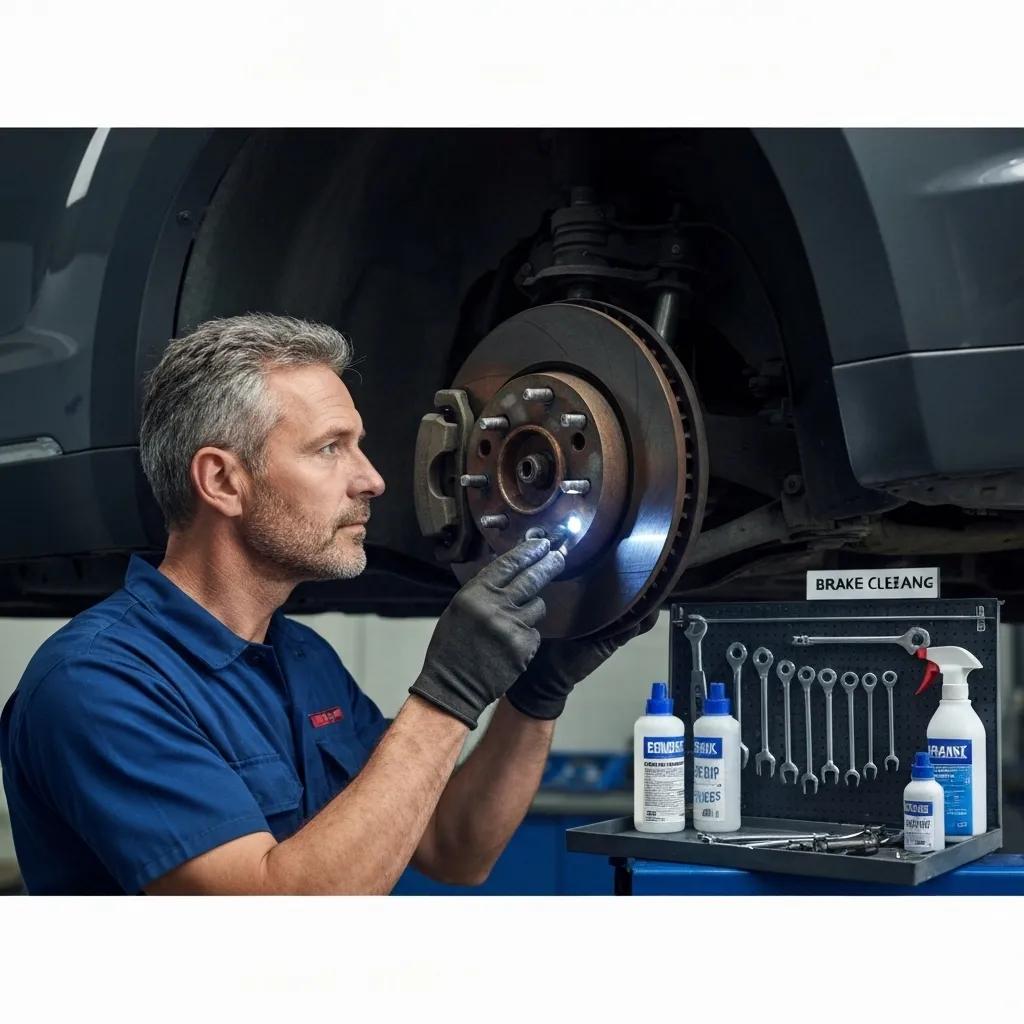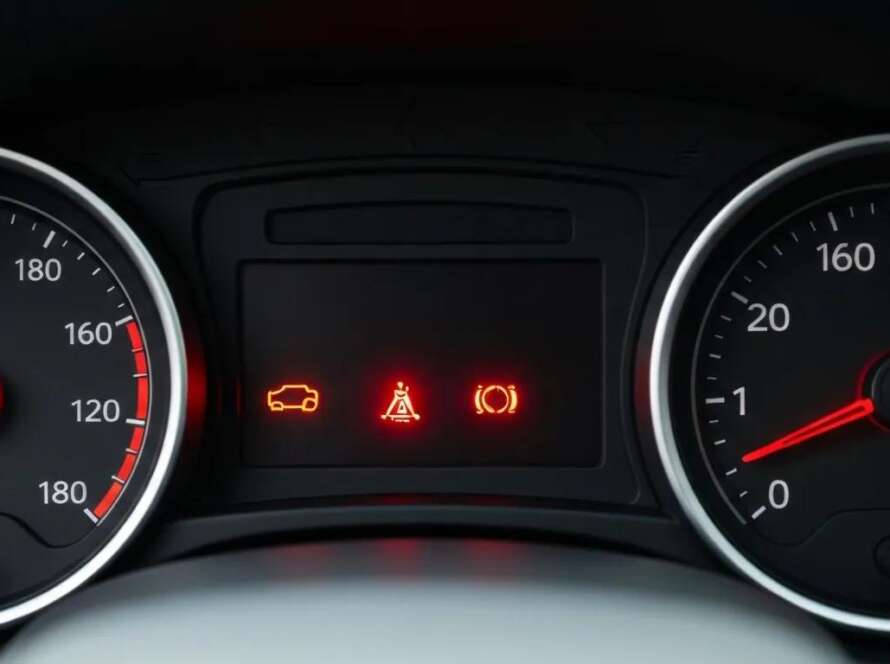
Comprehensive Vehicle Diagnostics Services in Graham WA: Expert Car Diagnostic Solutions and Check Engine Light Diagnosis

Diagnosing hidden vehicle issues early can prevent breakdowns and costly repairs while improving safety and performance. Our vehicle diagnostics services in Graham WA leverage advanced OBD-II scanning, certified technicians, and structured workflows to identify engine, transmission, brake, and electrical problems with precision.
This guide explains how diagnostics work, why check engine light analysis matters, the range of engine and transmission services we offer, plus brake, electrical inspections and the lasting benefits of proactive maintenance.
You’ll learn:
- What vehicle diagnostics entail and core OBD-II technology
- The critical nature of check engine light diagnosis
- Engine, transmission, brake, and electrical diagnostic methods
- How early issue detection saves money, enhances safety, and extends vehicle life
What Are Vehicle Diagnostics and How Do They Work in Graham WA?
Vehicle diagnostics are systematic computer-based evaluations that assess electronic control units and mechanical subsystems to pinpoint faults before they escalate. By interfacing with the on-board diagnostics (OBD-II) network, our shop reads error codes, analyzes sensor data, and correlates readings with real-time operating conditions to ensure accurate identification of engine, transmission, brake, and electrical issues.
Key components of a full diagnostic evaluation include:
- OBD-II Scan – Captures stored trouble codes from the engine control module.
- Live Data Monitoring – Records sensor outputs like fuel trim, coolant temperature, and RPM.
- Physical Inspection – Verifies wiring, hoses, and connectors for visible damage or leaks.
This multi-layered approach uncovers both electronic and mechanical faults, leading directly into how vehicle computer scans and OBD-II technology drive accuracy.
What is a Vehicle Computer Scan and How Does OBD-II Technology Help?
A vehicle computer scan uses an OBD-II interface to communicate with the engine control unit, reading diagnostic trouble codes (DTCs) and live sensor values to reveal malfunctions. This protocol standardizes data formats across makes and models, allowing technicians to access emission, fuel system, and engine misfire information instantly.
| Diagnostic Tool | Function | Benefit |
|---|---|---|
| OBD-II Scanner | Reads/clears stored fault codes | Pinpoints exact system failures |
| Live-Data Monitor | Displays real-time sensor values | Identifies intermittent or developing issues |
| Data Logging Module | Records long-term performance metrics | Tracks fault trends for predictive maintenance |
These electronic readings guide targeted inspections and repairs, which certified technicians then validate through hands-on testing.
How Do Certified Technicians Perform Accurate Diagnostics?
Certified technicians apply standardized training and OEM-level procedures to interpret diagnostic codes and sensor data, ensuring reliable fault isolation. Their expertise in engine management systems, electrical schematics, and sensor calibration allows for precise evaluation of complex vehicle systems.
By combining code analysis with specialized tools like fuel pressure testers and thermal cameras, our technicians diagnose root causes rather than just symptoms. This depth of knowledge reduces unnecessary parts replacement and promotes long-term reliability, setting the stage for our detailed diagnostic process.
What Are the Key Steps in Our Diagnostic Process?
A structured diagnostic protocol ensures no issue goes unnoticed and every finding translates into clear action.
- Initial Computer Scan – Connect OBD-II scanner to read all stored and pending codes.
- Data Review & Expert Analysis – Certified technician interprets code data and trends.
- Visual and Functional Inspection – Check hoses, belts, wiring, sensors, and fluid levels.
- Component Testing – Use multimeters, pressure gauges, and scope tests to confirm malfunctions.
- Transparent Reporting & Recommendations – Provide detailed findings with cost-effective repair plans.
Each stage builds upon the last, preparing us to explore why diagnosing a check engine light promptly is critical for your vehicle’s health.
Why Is Check Engine Light Diagnosis Crucial for Your Vehicle in Graham WA?

Diagnosing a check engine light immediately can prevent minor sensor faults from developing into major engine damage. The check engine indicator reflects the engine control unit detecting parameters outside normal ranges, from loose fuel caps to failing catalytic converters. Early identification of fault codes preserves emissions compliance, safeguards fuel economy, and prevents breakdowns.
Common engine fault categories include:
| Code Category | Meaning | Example Scenario |
|---|---|---|
| P0xxx (Powertrain) | Engine and transmission issues | Misfire detected due to worn spark plug |
| P2xxx (Emissions) | Catalyst or oxygen sensor faults | O2 sensor efficiency below threshold |
| U0xxx (Network) | Communication errors between modules | Lost signal from ABS module |
Understanding these code families helps you appreciate how diagnostics reveal both immediate concerns and underlying wear patterns, leading into sensor and emissions fault identification.
What Do Common Check Engine Light Codes Mean?
Check engine codes communicate specific subsystem failures by grouping faults into powertrain, emissions, and network categories. P0302, for example, indicates a cylinder-2 misfire detected by the engine control module, while P0420 flags catalyst efficiency below threshold. By interpreting these codes, technicians target spark plugs, injectors, or catalytic components directly.
Recognizing P-series codes as engine-related and P2-series codes as emissions-related allows us to focus inspections accordingly and determine the most reliable repair path.
How Can Diagnostics Identify Emissions and Sensor Issues?
Diagnostics isolate emissions and sensor faults by comparing live sensor readings against factory specifications and evaluating subsystem performance under load. For instance, an oxygen sensor test correlates voltage oscillations with air-fuel ratios, and an EVAP system check monitors purge valve activation and fuel tank pressure to detect leaks.
When Should You Get Your Check Engine Light Diagnosed?
You should schedule a diagnostics appointment as soon as the check engine light illuminates steadily, or within one driving cycle if it flashes intermittently. A steady light indicates a fault that may affect emissions, while a flashing light often signals severe misfires that can damage the catalytic converter.
Prompt diagnosis within 24–48 hours prevents progressive damage and keeps your vehicle compliant with inspection requirements, which leads into the specific engine diagnostic services we offer.
Which Engine Diagnostic Services Are Available in Graham WA?
Our shop offers a suite of engine diagnostic services tailored to pinpoint misfires, fuel system malfunctions, and ignition faults. From advanced computer scans to mechanical component testing, we deliver data-backed analysis that supports accurate repair recommendations.
How Are Engine Misfires and Fuel System Problems Diagnosed?
Misfire diagnostics combine OBD-II code data with cylinder balance tests, ignition coil inspections, and fuel rail pressure checks. Live-data analysis reveals fluctuations in fuel trim and combustion stability, while pressure gauge readings confirm fuel pump performance under load.
By correlating ECU data with mechanical testing, we resolve misfires at their source—whether spark, compression, or fuel delivery.
What Are Ignition System Faults and How Are They Detected?
Ignition issues such as worn spark plugs, faulty coils, or damaged high-tension leads manifest through misfire codes and unstable idle RPM. Technicians use oscilloscope waveform analysis on ignition coils and scan spark event primary currents to detect weak sparks or coil degradation.
This precision testing prevents ignition faults from causing engine roughness or long-term damage, illustrating how diagnostics optimize performance.
How Do Diagnostics Improve Engine Performance and Longevity?
Comprehensive engine diagnostics enhance performance by identifying air-fuel imbalances, friction points, and sensor drift before they lead to power loss or component failure. Timely repairs based on precise fault isolation reduce wear on pistons, bearings, and emissions systems, extending engine life.
With early detection, you save money on major overhauls and maintain consistent power delivery mile after mile.
How Do Transmission Diagnostic Services in Graham WA Detect Problems?
Transmission diagnostics evaluate hydraulic pressure, solenoid operation, and electronic control signals to uncover slipping, shifting delays, or module communication errors. By scanning the transmission control unit and performing road-test evaluations under varied loads, we identify faults that impact drivability and safety.
What Are the Signs of Transmission Slippage and Gear Shifting Issues?
- Erratic gear changes under acceleration or deceleration.
- Unusual RPM surges without corresponding speed increases.
- Delayed engagement when shifting from park to drive.
These symptoms prompt targeted pressure tests and solenoid activation checks to confirm internal faults.
How Are Transmission Solenoid Failures Diagnosed?
Technicians activate individual solenoids via the scanner while monitoring hydraulic pressure and shift timing. A stuck or weak solenoid produces inconsistent pressure curves, revealing the exact valve causing harsh shifts or gear slipping.
By isolating the specific solenoid, we avoid full assembly rebuilds and deliver cost-effective repairs.
What Is the Difference Between Automatic and Manual Transmission Diagnostics?
| Transmission Type | Diagnostic Focus | Typical Procedure |
|---|---|---|
| Automatic | Solenoid function, pressure tests | Scanned ECU codes + road-test pressure analysis |
| Manual | Clutch engagement, gear mesh analysis | Visual inspection + manual shift force measurement |
What Does Brake System Diagnostics in Graham WA Include?

Brake system diagnostics integrate ABS module scanning, fluid contamination analysis, and sensor validation to verify safe stopping power and electronic stability control performance. This comprehensive inspection uncovers both hydraulic and electronic faults.
| Component | Diagnostic Test | Expected Outcome |
|---|---|---|
| ABS Module | Scan for fault codes and activation tests | Proper ABS cycle under varying loads |
| Brake Sensors | Resistance and signal integrity check | Stable sensor readings within spec |
| Brake Fluid | Contamination and moisture content test | Fluid moisture below 3% for safe operation |
How Are ABS and Traction Control Issues Identified?
ABS and traction faults surface as stored ECU codes (e.g., C0210 ABS pump failure) combined with warning lamp illumination. Technicians clear and re-test codes, then simulate wheel slip conditions while monitoring wheel speed sensor outputs to validate proper module response.
This method ensures both safety and compliance with electronic stability requirements.
What Causes Brake Sensor Faults and Fluid Contamination?
Wiring corrosion, sensor missing tone rings, or connector damage often cause sensor signal dropouts. Meanwhile, brake fluid absorbs moisture over time, lowering its boiling point and risking vapor lock under heavy braking. Fluid testing quantifies moisture levels, and sensor resistance tests confirm electrical integrity.
Addressing both ensures reliable brake performance and system longevity.
How Do Diagnostics Ensure Brake System Safety?
By combining electronic code analysis with hands-on fluid and component testing, diagnostics verify stopping power, ABS intervention, and traction control readiness under load. This holistic approach enhances driver confidence and road safety in all conditions.
How Are Electrical System Diagnostics Performed in Graham WA?
Electrical diagnostics trace wiring circuits, test battery and charging health, and validate sensor outputs to prevent unexpected breakdowns and erratic subsystem behavior.
| System | Test Method | Purpose |
|---|---|---|
| Battery & Charging | Load testing and voltage regulation check | Confirm alternator output and battery capacity |
| Wiring Harness | Continuity and short-circuit inspection | Identify open circuits or grounds |
| Sensors & Modules | Signal voltage and resistance measurements | Ensure accurate ECU data acquisition |
How Do Technicians Test Battery and Charging Systems?
Technicians perform a load test on the battery to verify cold-cranking amps, then measure alternator output at idle and under load to confirm stable voltage regulation between 13.8V and 14.4V.
Ensuring charging health prevents sudden power loss that can trigger false diagnostic codes or disable safety systems.
What Are Common Wiring Faults and Sensor Malfunctions?
- Frayed or chafed harnesses causing intermittent shorts.
- Corroded connectors leading to high resistance and erratic readings.
- Sensor drift due to internal element wear resulting in out-of-range voltage.
How Does Electrical Diagnostics Prevent Vehicle Breakdowns?
Accurate electrical fault isolation stops minor wiring issues from escalating into immobilizing failures, ensures reliable ECU communication, and supports all other diagnostics by delivering trustworthy data.
What Are the Benefits of Comprehensive Vehicle Diagnostics in Graham WA?
Comprehensive diagnostics enhance safety, optimize performance, and reduce maintenance costs by catching issues early and basing repairs on precise data rather than guesswork.
| Benefit | Mechanism | Impact |
|---|---|---|
| Cost Savings | Early fault detection prevents major repairs | Reduces average repair bill by up to 30% |
| Enhanced Safety | Verifies brake, steering, and sensor health | Minimizes accident risk and liability |
| Extended Longevity | Monitors wear-related parameters | Prolongs engine, transmission life |
| Transparent Reporting | Detailed data logs and clear recommendations | Builds trust and informed service decisions |
How Does Early Problem Detection Save You Money?
Identifying worn spark plugs, failing sensors, or minor leak points before they develop into engine damage or catalytic failure cuts repair costs dramatically and avoids diagnostic guesswork.
Early detection also prevents secondary failures—like engine overheating or exhaust blockages—that multiply repair expenses.
How Do Diagnostics Improve Vehicle Safety and Performance?
Reliable readings from ABS modules, airbag controllers, and engine sensors ensure all safety systems function as intended. Simultaneously, optimizing fuel-air ratios and ignition timing restores full engine power and efficiency.
This synergy between safety and performance keeps you confident on the road and maximizes fuel economy.
Why Is Preventative Maintenance Important for Vehicle Longevity?
Regular diagnostics uncover gradual component wear—such as deteriorating belts or fouled spark plugs—allowing scheduled replacement before catastrophic breakdowns. Preventative checks maintain optimal engine compression, emissions compliance, and fluid integrity for thousands of additional miles.
Proactive care extends vehicle life and preserves resale value.
How Does Our Shop Ensure Transparent and Accurate Diagnostic Reporting?
We provide itemized diagnostic reports showing trouble code data, sensor waveforms, test results, and recommended repair steps with pricing. This open communication builds confidence, enabling you to approve only the necessary services and maintain a comprehensive history of your vehicle’s health.
Proactive vehicle diagnostics in Graham WA transform reactive repairs into strategic maintenance, protecting your investment and ensuring peak performance. With certified technicians, cutting-edge OBD-II tools, and transparent reporting, our shop delivers reliable solutions for engine, transmission, brake, and electrical systems. Trust us to keep your vehicle safe, efficient, and road-ready mile after mile.




